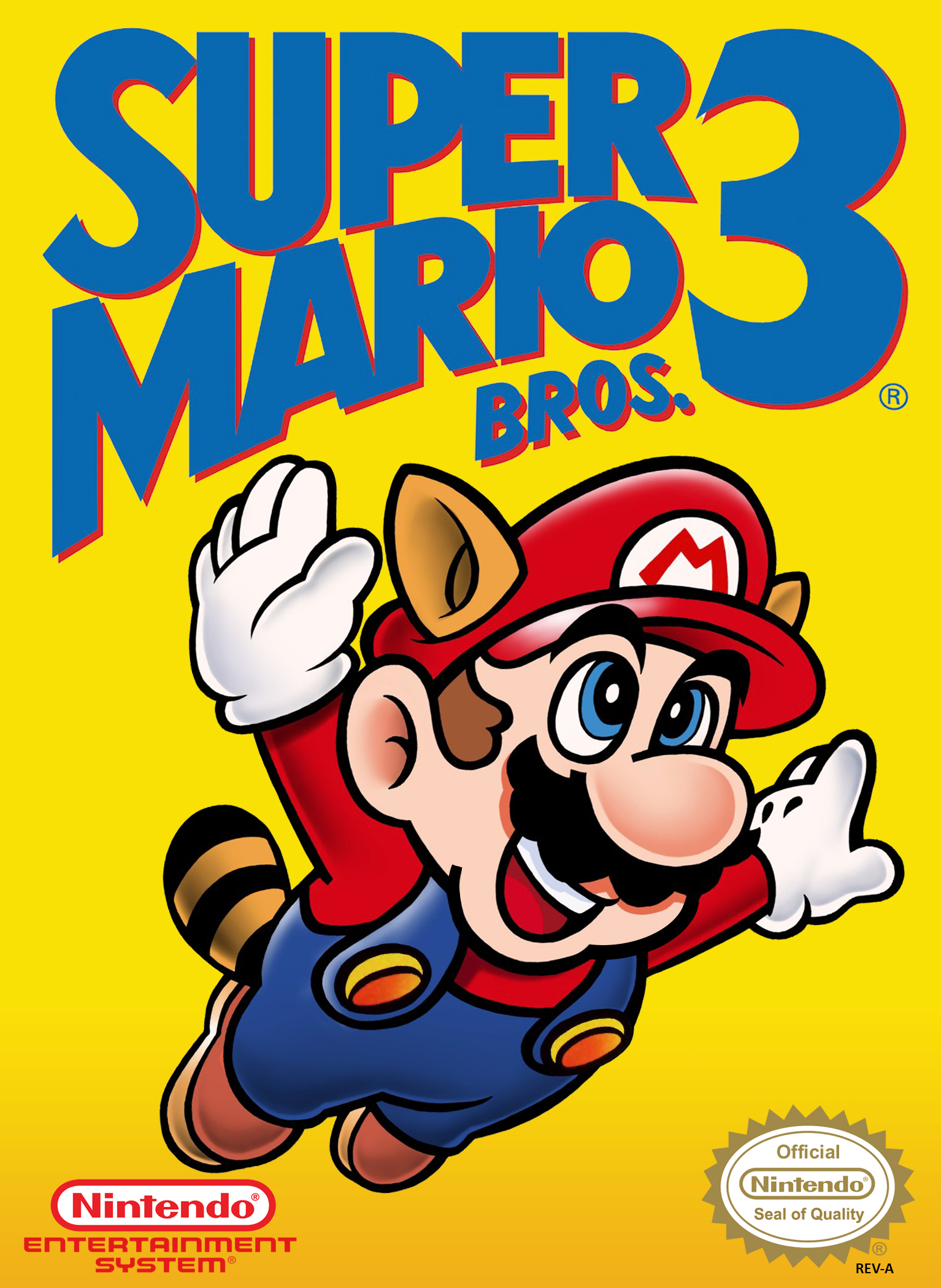
SUPER MARIO BROS. 3
Super Mario Bros. 3, released for the NES in 1990 by Nintendo, stands as a pinnacle of artistic achievement in 8-bit gaming. Building upon the beloved foundation of its predecessors, this title elevates the platforming genre through its meticulous sprite work, vibrant color palettes, and imaginative level design, transforming each world into a visually stunning and immersive masterpiece.
At the heart of Super Mario Bros. 3’s artistic brilliance is its exceptional sprite work and character design. Mario and Luigi are rendered with greater detail and fluidity, their expressive animations capturing every jump, spin, and power-up interaction with remarkable precision. The diverse cast of enemies, from the mischievous Koopa Troopas to the formidable Bowser and his Koopalings, are meticulously crafted with unique silhouettes and vibrant colors that make each encounter visually engaging and memorable. This diversity not only enhances the visual appeal but also adds depth to the game’s dynamic world.
The game’s environments are a testament to thoughtful artistic direction and innovative design. Super Mario Bros. 3 transports players through a variety of themed worlds, each with its own distinct aesthetic and atmosphere. From the lush greenery of Grass Land and the fiery challenges of Desert Land to the icy terrains of Snow Land and the mechanical marvels of Sky Land, every stage is adorned with rich, layered backgrounds that create depth and immersion. The use of a varied color palette ensures that each world feels fresh and visually stimulating, while intricate details such as animated clouds, moving platforms, and interactive scenery elements bring each environment to life.
Animation in Super Mario Bros. 3 plays a crucial role in its artistic success. Despite the NES’s technical limitations, the game achieves remarkably smooth and responsive animations that enhance the sense of action and adventure. Mario’s acrobatic moves, enemy behaviors, and environmental interactions are depicted with fluidity and clarity, ensuring that gameplay remains engaging and visually coherent. The seamless transitions between different animations maintain the game’s pacing, making each level feel dynamic and alive.
Visual storytelling is intricately woven into Super Mario Bros. 3’s design. Each world not only presents unique challenges but also conveys parts of Mario’s journey to rescue Princess Toadstool from Bowser’s clutches. Environmental cues, such as hidden pathways, thematic obstacles, and visual motifs, provide narrative context and guide players through the expansive game world. These visual elements work harmoniously with the gameplay mechanics, creating a cohesive and immersive narrative experience that draws players deeper into Mario’s vibrant universe.
The audio design complements Super Mario Bros. 3’s visual artistry with its iconic and memorable soundtrack. Composed by Koji Kondo, the music features catchy melodies and dynamic tunes that perfectly match the diverse environments and intense action sequences. Sound effects, from the satisfying sounds of power-ups to the distinctive noises of enemy attacks, are crisply executed, reinforcing the visual actions and enhancing the overall sensory experience. The harmonious blend of sound and visuals ensures that every moment feels lively and impactful.
Moreover, Super Mario Bros. 3 excels in its use of visual effects to enhance the artistic presentation. Particle effects, such as sparkling coins, shimmering power-ups, and dynamic weather changes, add layers of detail and excitement to the scenes. These effects are seamlessly integrated into the gameplay, elevating the visual appeal without distracting from the primary action. The strategic use of lighting and shadow further enhances the game’s atmospheric depth, creating a visually cohesive and engaging environment that captivates players.
In conclusion, Super Mario Bros. 3 on the NES exemplifies how artistic vision and technical prowess can converge to create a visually stunning and immersive gaming experience. Its detailed sprite work, rich and varied environments, smooth animations, and cohesive visual storytelling elevate it beyond a standard platformer, making it a beloved classic celebrated for its artistic craftsmanship and enduring charm. Super Mario Bros. 3 not only offers engaging and challenging gameplay but also stands as a remarkable piece of interactive art, showcasing the potential of 8-bit artistry to deliver epic and memorable adventures.

